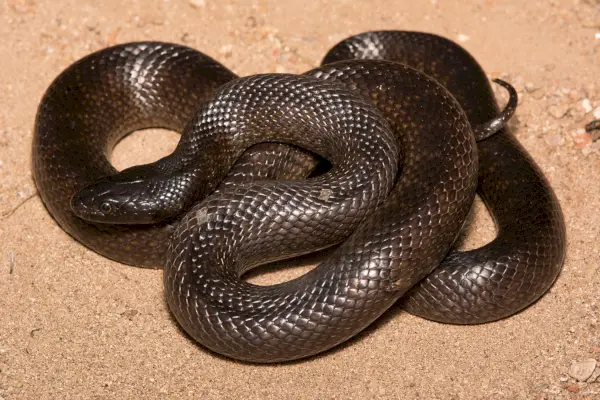Więc tego lata może nie było tym, na które wszyscy się liczyliśmy. Ale to nie znaczy, że nie możemy cieszyć się wszystkimi zachwytami, które Matka Oferuje natura! Z rozkwitem pięknymi wiosennymi i letnimi kwiatami, jest wiele do zobaczenia na następnym spacerze w parku. Ile kwiatów możesz oderwać? Pobierz naszą listę kontrolną do wydrukowania tutaj .
Pszczoła Orchid
Pszczoła Orchid jest podstępnym małym kwiatem, ponieważ wygląda jak żeńska pszczoła, która następnie zachęca męskie pszczoły do wleciania i zapylania kwiatu. Niestety, chociaż ten gatunek pszczoły nie mieszka w Wielkiej Brytanii, więc kwiaty orchidei pszczół są samowystarczalne. Najlepszy czas na zobaczenie storczyków pszczół w czerwcu i lipcu. A jeśli mieszkasz w pobliżu użytku lub wybrzeże, będziesz mieć większą szansę na ich zauważenie!
Dzwonek
Czy wiesz, że Wielka Brytania jest domem dla ponad połowy światowej populacji Bluebells? Jesteśmy prawie pewni, że będziesz mógł je łatwo znaleźć na spacerze. Od połowy kwietnia Bluebells rozłożył oszałamiający niebieski koc na naszych lasach. I to naprawdę taki piękny widok! Te ukochane kwiaty są znane jako ulubione w Fairies i mają również bardzo wyraźny słodki zapach. Więc śmiało i przestań wąchać kwiaty.
Kukurydza
Kukurydza were once thought of as weeds and were almost completely wiped out. But now these pretty blue wildflowers are purposely grown on the sides of roads, towns, gardens and farmlands, producing colourful displays every summer.You can find cornflowers between June and August, so there’s plenty of time to get searching and tick these off your lists!
Krow pietruszki
Małe białe, parasolowe kwiaty krowy są bardzo znanym widokiem w Wielkiej Brytanii. Te dzikie kwiaty rosną szybko w lecie, w najlepszym czasie, aby zobaczyć je od maja do czerwca. Nie tylko te kwiaty ładne dla ludzi, ale zwierzęta kochają je tak samo! Od motyli po króliki - wszyscy oczekują na te kwitnienie każdego roku. Krow pietruszki można znaleźć głównie na użytkach zielonych, lasach, polach uprawnych, miastach i ogrodach.
Kows
Kowss are sure to brighten up your walk with their vibrant, yellow blooms! These are early spring flowers that you can find during April and May. They’re actually used a lot in May Day and Easter flower decorations and for spring weddings too.You can find cowslips in woodlands, meadows, towns and gardens all across England, Wales and Northern Ireland.
Pies Rose
Pies Roses are actually available all year long. But it’s only in the summer months, June and July to be more specific, where you’ll get to see their white and pink flowers. During autumn they produce red flowers which often get eaten by small animals.These flowers can be found all over the UK! You’ll have an easier time finding them though if you’re looking in woodlands, farmland or along the coast.
Naparstnica
Naparstnicas can be found between June and September and are unmistakable with their tube-shaped, magenta flowers. The most likely place you’ll spot them are beside the coast or in woodlands. While they may be poisonous to humans (if eaten they can cause headaches, nausea and stomach problems) they’re an excellent source of nectar for bees.
Dzwonek
Dzwoneks are a simple flower but definitely one of the prettiest you’ll see this spring/summer! Their vibrant blue bell-shaped heads hang in clusters on stems and are a real sight to see. They’re also sometimes known as ‘witches thimbles’ or ‘fairy bells’ so they have a pretty magical feel to them.The good news is, you can see these beauties between June and October. They can be found all over the UK, from the coast and grasslands to hillsides and towns. Be sure not to miss them!
Słodka fiolet
Słodka fiolet flowers are very important spring blooms as they provide nectar for many butterflies from April to June. They’re also insanely pretty! Unsurprisingly, given its name, these flowers were also used as a perfume in Ancient Greece so make sure you get a good whiff of them.You can find sweet violet’s in a range of different habitats such as woodlands, farmland, grasslands, heathlands and moorlands.
Dzika orchidea
Dzika orchideas are beautiful, bright pink flowers that are pretty common around Scotland and Northern Ireland, Southern England and Wales. And they’re known for their sweet, citrusy scent which only gets stronger in the evenings.The best time to spot orchids is during June and July. And they can be found mainly in grasslands, heathlands and moorlands. They may be a little trickier to find but they’ll definitely be worth it!
Dzikie kwiaty czosnkowe
Przez większość roku Wild Garlic spędza czas w lesie jako żarówka pod ziemią. Ale kiedy pojawia się wiosna, zaczyna pojawiać się czosnek! Hipnotyzujące białe dywany rozprzestrzeniają się po lesie i silny zapach czosnku, który wszyscy znamy (i kochamy!) Przyciągają setki zapylających owadów. Najlepsza pora roku, aby dostrzec dziki czosnek, jest w kwietniu i może, jeśli chcesz je znaleźć w tym roku, musisz być szybki! Chociaż można je znaleźć w całej Wielkiej Brytanii, są bardziej popularne na południu i można je naprawdę znaleźć tylko w lasach.
Anemon drewniany
Grecka mitologia, znana potocznie jako „Windflowers”, opowiada, w jaki sposób Wood Anemony zostały wysłane przez anemos, greckiego boga wiatru, aby ogłosić swoje przybycie na wiosnę.
Kwiaty te znajdują się nisko rosnące i mają sześć do siedmiu dużych białych lub fioletowych płatków, otoczone żółtymi pylnikami.
Kwiaty kwitną między marcem a maja i można je znaleźć w lasach, cmentarzu, parkach i ogrodach.





